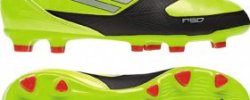Search
West Houston Indoor Soccer

Baruch Field 126 Baruch Destination Ny, NY 12 (Baruch spot & E. Houston st.) F train to 2nd Ave, stroll or take M21 East on E. Houston St. Baruch...
Read MoreLets look like a football star

While attention of many people is focused on the football field, someone can only think about the score, but others note appearance, including hairstyles...
Read MoreYouth Soccer Cleats

Sort By: Youth Soccer Footwear, Soccer Shorts, Shirts & Gear If you are a young soccer player while require childhood soccer cleats, football jerseys...
Read MoreWylie Soccer Association

To offer North Tx a residential district enriching competitive football club emphasizing lasting player development and training and a unified, positive...
Read More